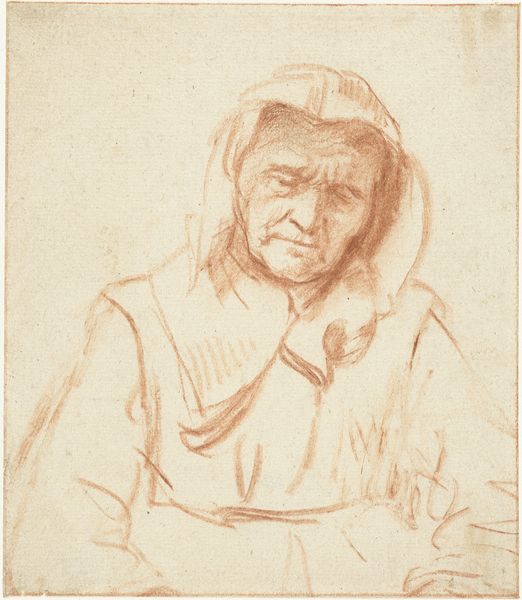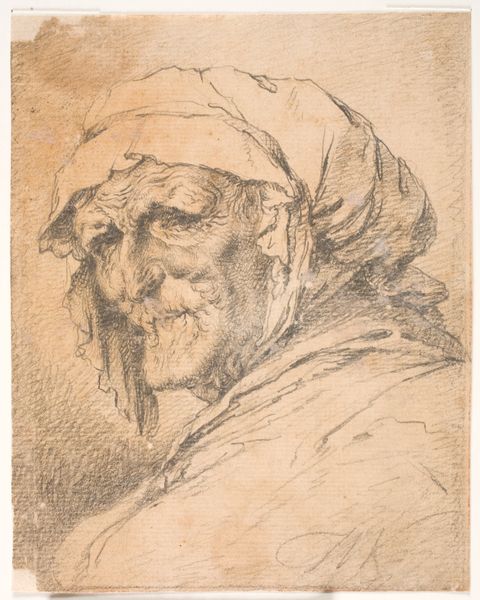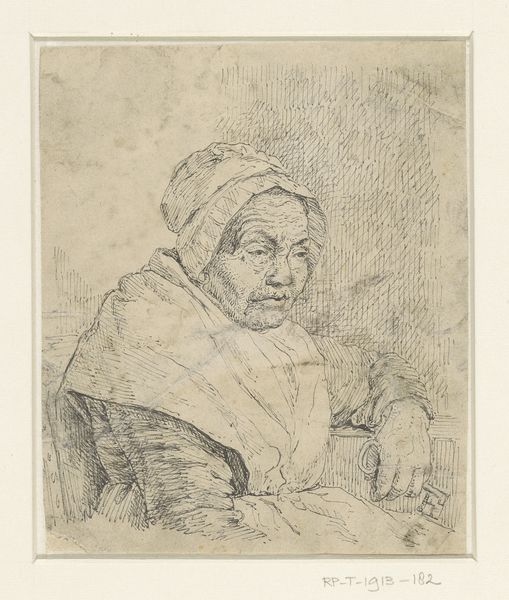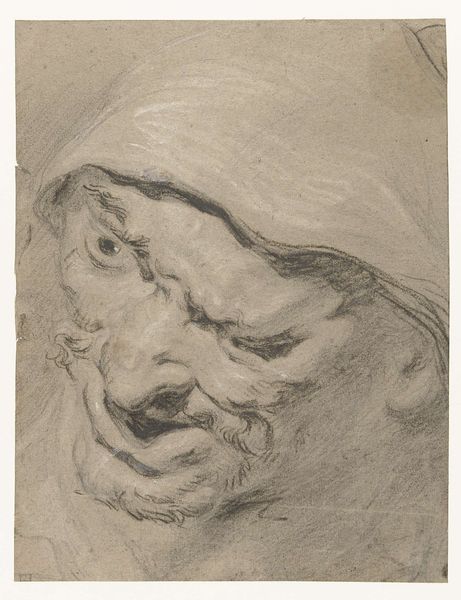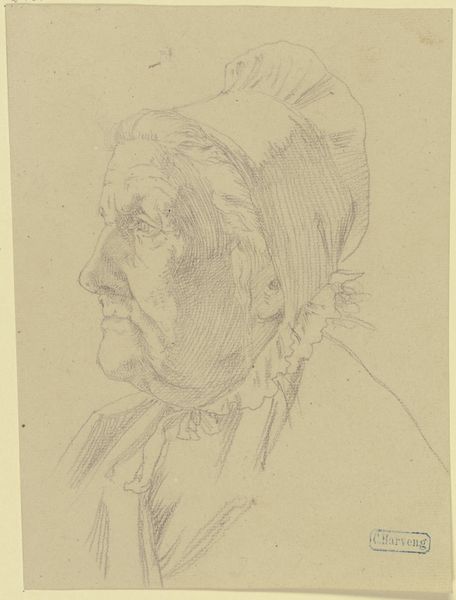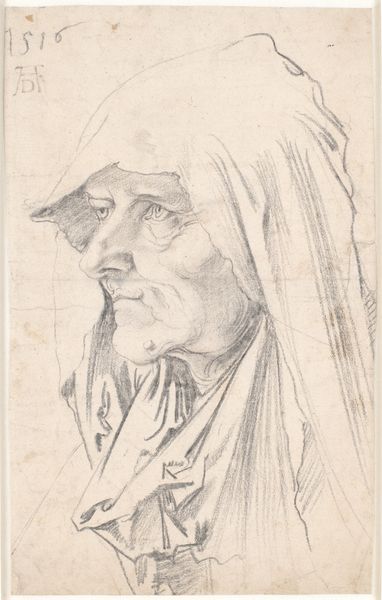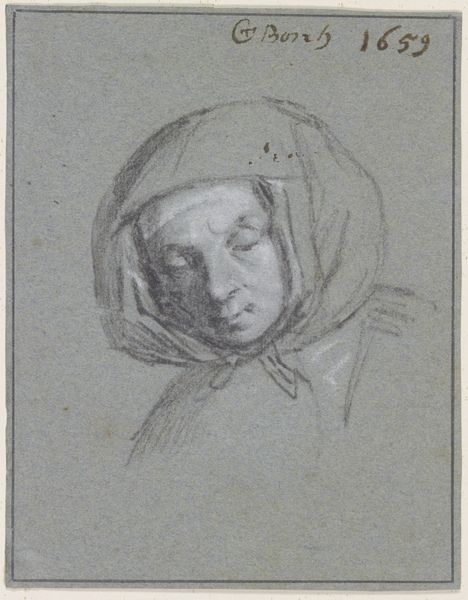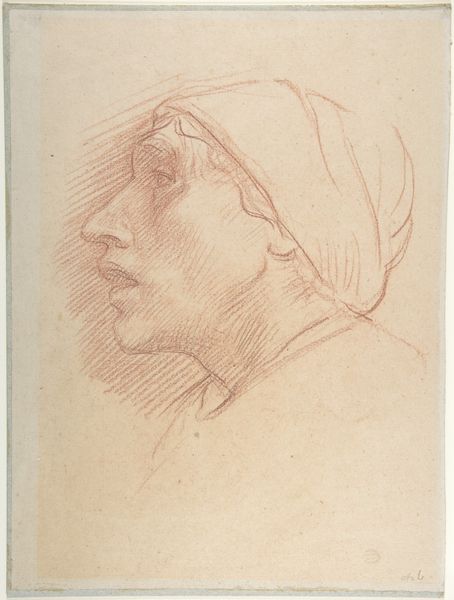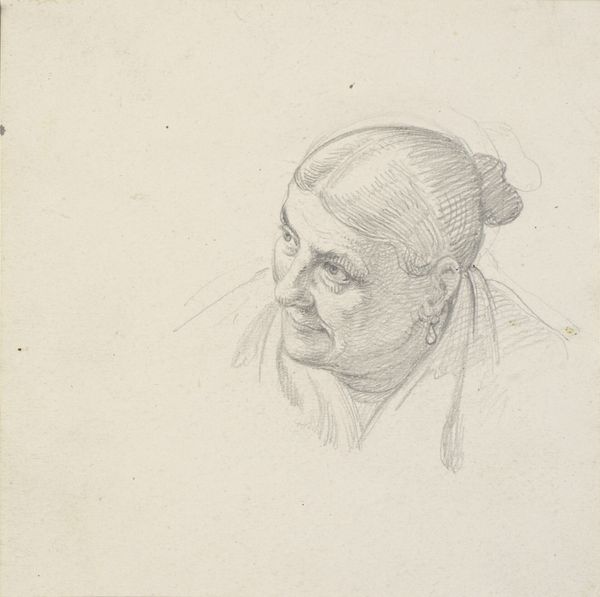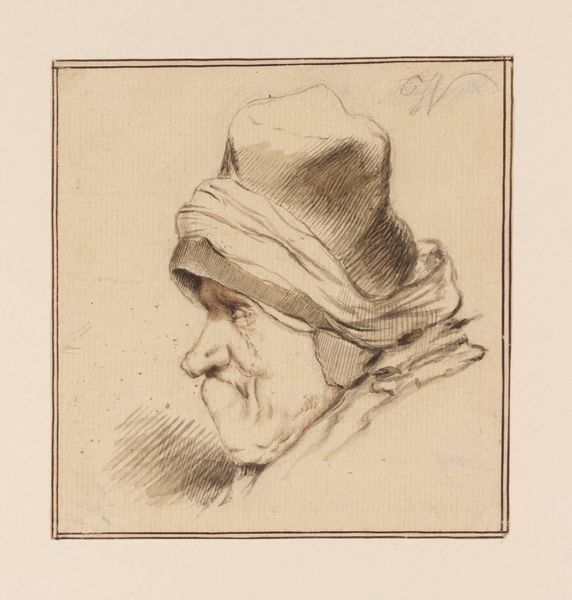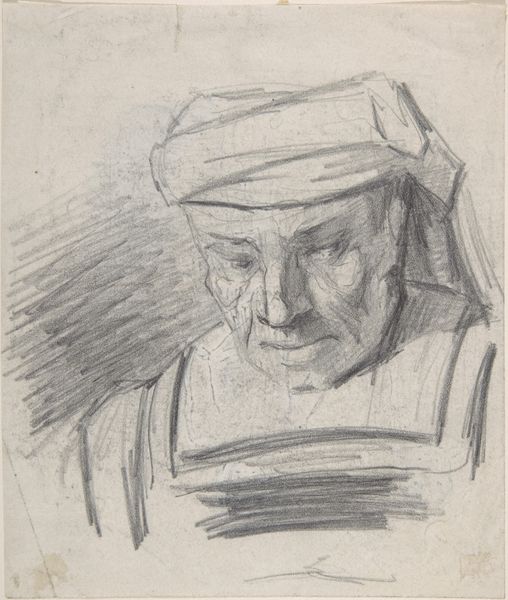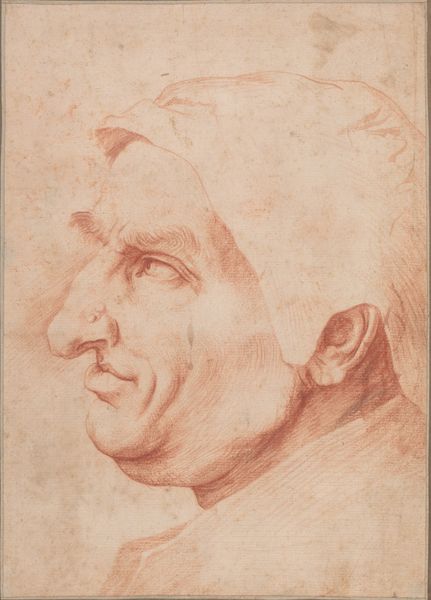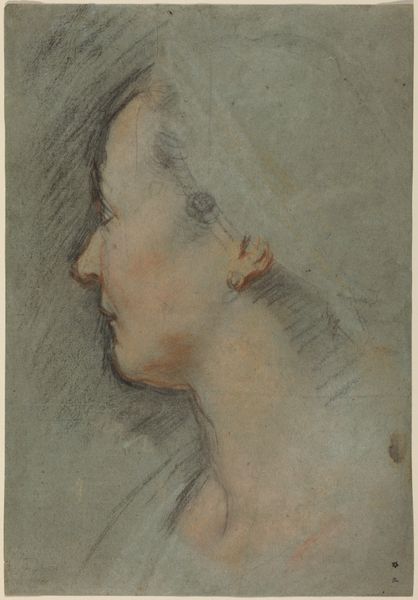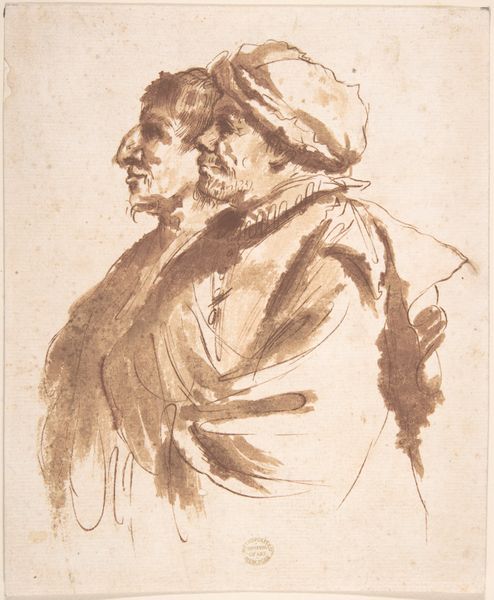
drawing, paper, pencil, chalk, graphite
#
portrait
#
drawing
#
charcoal drawing
#
paper
#
pencil drawing
#
pencil
#
chalk
#
graphite
#
portrait drawing
#
academic-art
Dimensions: 241 × 203 mm
Copyright: Public Domain
Editor: Here we have "Head of an Old Man" by Charles Le Brun, rendered with what looks like chalk, graphite, and pencil on paper. The subject’s brow is furrowed, his eyes are closed... there's a sense of weariness. What strikes you most about this piece? Curator: I immediately think about the context in which Le Brun was working. As the "first painter" to King Louis XIV, Le Brun wielded immense influence over the arts in France. Do you see how this drawing, though seemingly a simple study, participates in the larger political theater of the court? Editor: Political theater? In a simple portrait sketch? Curator: Absolutely! Consider the Academy's role. Le Brun helped establish it, solidifying a hierarchy within the art world. A drawing like this was likely part of an academic exercise, meant to demonstrate mastery and understanding of the human form. By depicting an older man, perhaps he's subtly alluding to wisdom, a quality valued by the monarchy he served. Editor: That’s an interesting idea. So, art wasn’t just about aesthetics; it was also about maintaining a certain social order? Curator: Precisely. Think about the patronage system. The King and the court essentially controlled who succeeded as artists, and what types of art were promoted. Drawings like this could serve as displays of skill intended to impress potential patrons, cementing the artist's position within the power structure. Now, considering all that, does it shift your understanding of the "weariness" you observed earlier? Editor: It does. Maybe it's not just weariness, but also a sort of… burden? The weight of responsibility, perhaps, portrayed through this man. Curator: Exactly! The politics of imagery are rarely straightforward, and it's often in these “simple” works that we find the most potent clues to the cultural and social forces at play. Editor: That's really insightful; I never thought a simple sketch could reveal so much about the art world’s hierarchies. Curator: Art history continually urges us to see beyond the surface. It's the relationships, the power structures, the social expectations that give artwork true context.
Comments
No comments
Be the first to comment and join the conversation on the ultimate creative platform.
